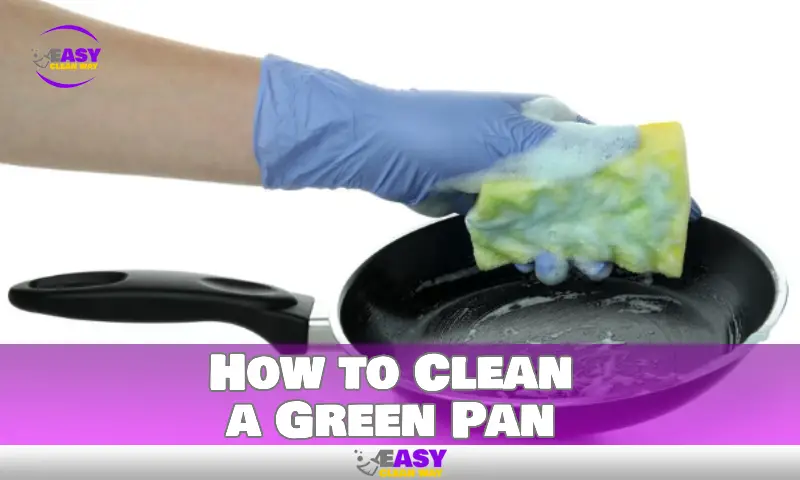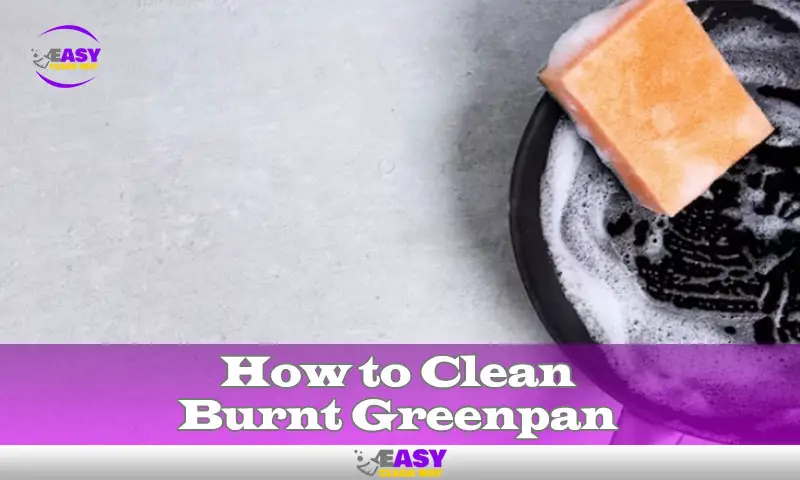To clean a green pan, use a mixture of warm water and mild dish soap. Scrub the pan gently with a non-abrasive sponge or cloth, and rinse thoroughly with warm water before drying.
Green pans are a popular choice for their nonstick properties, but they can become dirty with regular use. Cleaning them properly is essential to maintaining their performance and longevity. We will discuss the best method to clean a green pan and remove any stuck-on residue.
We will also provide tips on how to prevent staining and buildup, ensuring that your green pan remains in great condition for years to come. So, let’s dive in and learn the most effective way to clean a green pan.
Benefits Of Using A Green Pan For Cooking
Green pans are a wise choice for cooking due to their non-toxic, eco-friendly materials. These pans distribute heat excellently, ensuring even cooking. The superior non-stick surface makes it easy to release food, simplifying the cleaning process. With green pans, you don’t have to worry about harmful substances leaching into your food or the environment.
These pans are designed to protect both your health and the planet. So, whether you’re making fried eggs or sautéing vegetables, a green pan ensures a safe and enjoyable cooking experience. Prepare healthy meals without any concerns about dangerous chemicals or wasteful materials.
Upgrade to a green pan and take advantage of its benefits today.
Washing The Pan With Mild Soap And Warm Water

To clean a green pan, gently hand wash it using mild soap and warm water. Avoid using abrasive sponges or scrubbers, as they may damage the pan’s surface. By hand washing the pan, you can maintain its quality and integrity for a longer period of time.
Regular washing will help remove any food residue and keep the pan in optimal condition. Ensure that you rinse it thoroughly and wipe it dry after washing to prevent any water spots or stains. Taking care of your green pan will not only extend its lifespan but also ensure a clean and healthy cooking experience.
Follow these simple steps to keep your pan looking and performing at its best for years to come.
Removing Stubborn Stains With Vinegar And Baking Soda
When it comes to cleaning a green pan, vinegar, and baking soda can be your best friends. One effective method is to create a paste using these two ingredients. Mix vinegar and baking soda together until you have a thick consistency.
Apply the paste to the stained areas of the pan and let it sit for a while. This will allow the mixture to penetrate and break down the stubborn stains. Next, gently scrub the pan using a soft sponge or cloth, focusing on the areas with stains.
With some elbow grease, you should be able to remove the stains completely. Rinse the pan thoroughly with water and dry it before using it again. So, say goodbye to those pesky stains on your green pan with this simple and eco-friendly cleaning solution.
Using Lemon Juice And Salt
To clean a green pan, start by squeezing fresh lemon juice onto the surface. Next, sprinkle salt over the lemon juice. Then, take a scrub brush and vigorously scrub the pan using the lemon-salt mixture. The acidic properties in the lemon juice will help break down any grease or residue on the pan, while the salt acts as a gentle abrasive to scrub away stains.
Continue scrubbing until the pan is clean and free of any green residue. Rinse the pan thoroughly with warm water and dry it with a clean towel. This simple and natural method is an effective way to clean a green pan without the use of harsh chemicals.
Boiling Water And Vinegar Method
Cleaning a green pan is a breeze with the boiling water and vinegar method. Start by filling the pan with equal parts of water and vinegar. Next, bring the mixture to a boil and let it simmer. This will help break down any stubborn stains or residue.
Once done, remove the pan from the heat and allow it to cool. The heat and acidity of the vinegar will work together to loosen any grime, making it easier to wipe away. Remember to use a soft sponge or cloth to avoid scratching the surface of the pan.
With this simple method, your green pan will be looking as good as new in no time.
Seasoning The Pan Before First Use
To properly clean a green pan, it’s important to season it before the first use. Start by applying a thin layer of oil to the pan’s surface. Then, heat the pan on low heat for a few minutes. This helps to create a non-stick surface.
Once heated, wipe off any excess oil with a paper towel. This simple step helps prevent food from sticking to the pan and makes cleaning easier. By seasoning your green pan, you can ensure its longevity and maintain its non-stick properties.
Cleaning and caring for your pan properly will keep it in top condition and extend its lifespan.
Avoiding High Heat And Metal Utensils
To clean a green pan effectively, it’s important to avoid exposing it to high heat and using metal utensils. Opt for low or medium heat settings during cooking to prevent damage. Instead of metal utensils, go for silicone or wooden ones to avoid scratching the pan’s surface.
These precautions will help you maintain the pan’s non-stick properties and extend its lifespan. Regular cleaning with mild dish soap and a soft sponge is recommended. Gently scrub the pan and rinse it thoroughly before drying. Avoid abrasive cleaners or scrubbing pads, as they can damage the non-stick coating.
By following these guidelines, you can ensure that your green pan remains in top condition for longer, making your cooking experiences healthier and more enjoyable.
Proper Storage Of Green Pans

Proper storage of green pans is crucial to protecting their non-stick coating. When stacking pans, it’s important to use protective layers in between to prevent scratches and damage. Avoid directly placing one pan on top of another without any barrier.
Alternatively, you can hang your green pans with a pot rack or hooks, which not only saves storage space but also minimizes the risk of scratches. Hanging them individually ensures their longevity and allows for easy access. By following these storage guidelines, you can extend the lifespan of your green pans and maintain their non-stick performance for a longer period of time.
FAQ
How Do You Clean A Green Pan?
To clean a green pan, start by washing it in warm, soapy water and scrubbing gently with a non-abrasive sponge.
Can You Use Baking Soda To Clean A Green Pan?
Yes, you can use baking soda to clean a green pan. Make a paste with baking soda and water, scrub the pan, then rinse thoroughly.
How Do You Remove Stubborn Stains From A Green Pan?
To remove stubborn stains from a green pan, soak it in a mixture of vinegar and water, then scrub gently with a sponge.
Can You Use Metal Utensils On A Green Pan?
No, it’s best to avoid using metal utensils on a green pan to prevent scratching the non-stick surface. Use wooden or silicone utensils instead.
Conclusion
Maintaining the cleanliness of your green pan is crucial for its longevity and optimal cooking performance. By following the simple yet effective tips and techniques mentioned in this blog post, you can easily keep your green pan looking and functioning like new.
Remember to use gentle cleaning agents, such as baking soda or vinegar, and avoid abrasive scrubbers that can damage the non-stick surface. Regularly seasoning your pan will also ensure that it retains its non-stick properties. Furthermore, proper storage and careful handling will help prevent scratches and extend the lifespan of your green pan.
Whether you are a professional chef or a home cook, keeping your green pan clean and well-maintained will enhance your cooking experience and allow you to enjoy healthier meals for years to come.
Hey there! I’m Alton Smith, your Clean Expert blogger. I’m on a quest to help you conquer chaos and embrace the joys of a tidy life.





